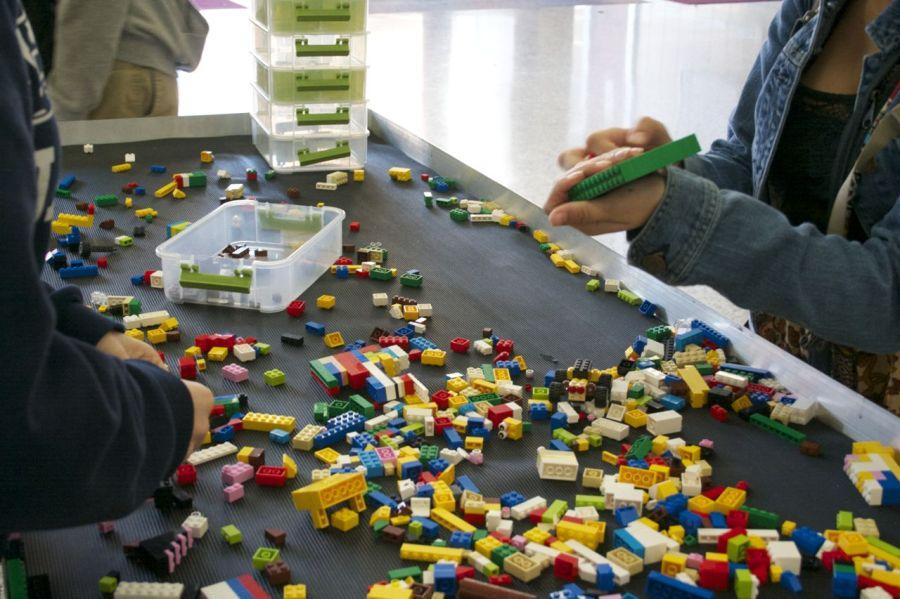West Mall to remain under construction after addition of new Lego table
Bearden students play with Legos in the West Mall this week.
November 20, 2014
Walk into the West Mall, and something is different. A new center of focus has appeared, drawing in innovative and inventive students, as well as those who are just curious. Bearden now has its own Lego table, which means “everything is awesome”.
“Legos are awesome in every way,” master builder and senior Michael Lepard said.
At Bearden, it seems Legos are more than just a toy with a vicious vendetta against your unsuspecting bare feet. The idea behind the Lego table is to let students exercise creativity and hands-on learning, while also having fun.
“A lot of the adults thought I was crazy,” principal Dr. John Bartlett said. “These are high school students…but there is no real age limit on someone’s ability to create.”
Dr. Bartlett discovered the concept of the Lego table a few years ago. Putting the table in the West Mall was more than just a whim; research and education theory are at work as well.
The table itself, however, is only the beginning. After placing more Legos on the table, Dr. Bartlett plans to add more interactive tables to the West Mall.
This includes the kinetic sand added recently. Lego robotics are also being discussed, as well as bean bags.
“Anything I can do to get kids to create, anything I can do to get kids’ minds firing,” Dr. Bartlett said. “Especially if they don’t think they’re at work.”
This is good news for Lepard, whose biggest regret in life is giving away “a few thousand dollars worth” of Legos in eighth grade.
To Lepard, Legos are useful for building things on a scale model.
“[Legos] really help with your imagination,” Lepard said. “You don’t have to picture doing something when it’s actually there.”
Physics teacher Mr. William Schult said that Legos also apply to his robotics club, starting from the recruiting process.
“I love the idea of a Lego table because it would attract people to building things, and building things attracts people to robotics,” Mr. Schult said.
Some more expensive Lego sets can even be programmed so that the user can control moving parts like motors and wheels. With this technology, students could connect the building process to robotic technology.
Legos can be applied to Mr. Schult’s physics classes as well.
“[Legos] link what we do in science as far as forces and construction to something realistic that’s a game,” Mr. Schult said. “And it’s fun.”
To Dr. Bartlett, the Lego table will be a success as long as students are able to apply imagination and ideas to hands-on creativity.
“The goal is to put it out there for students to be able to stand around and build and create,” Dr. Bartlett said.
